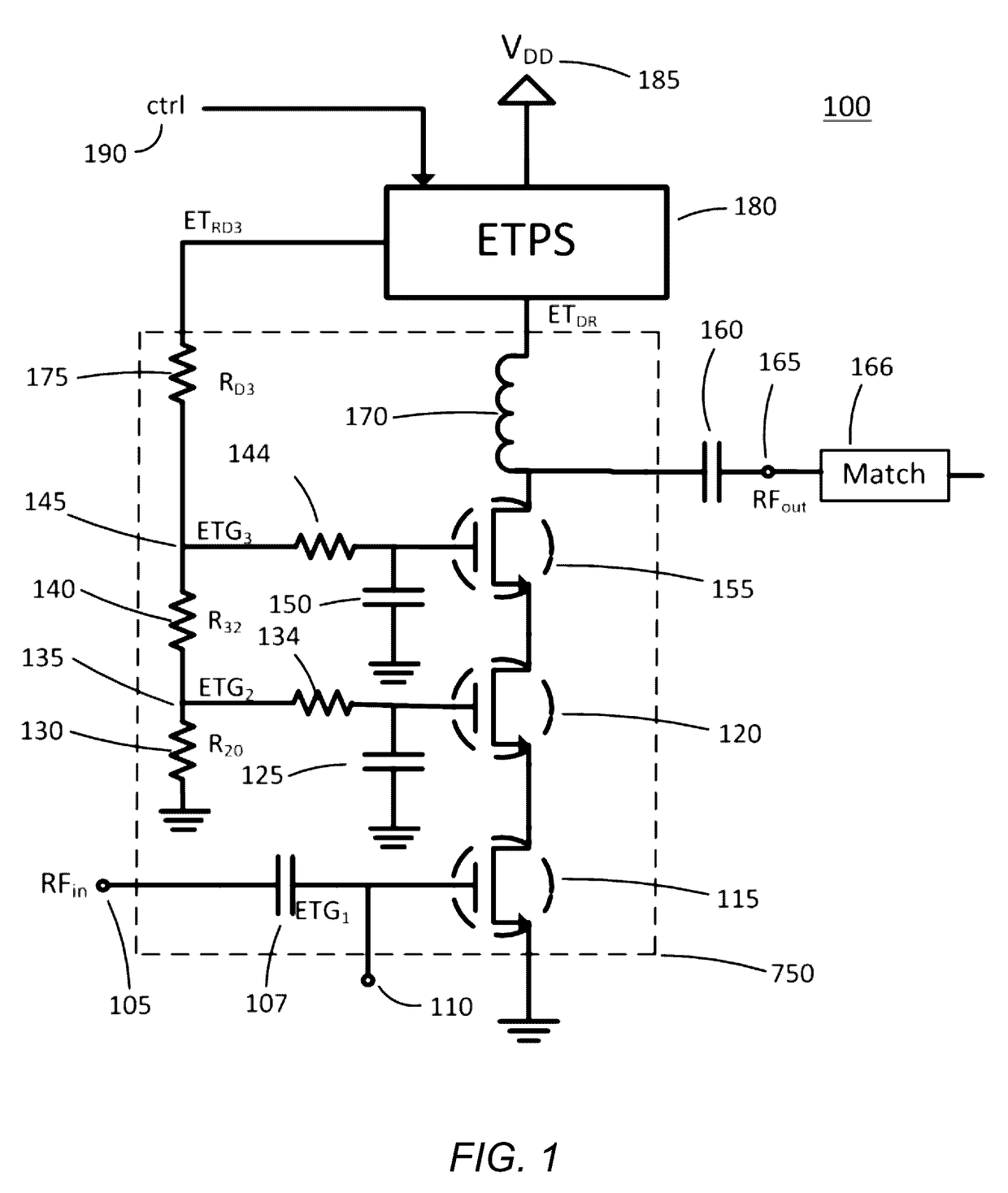Bias Control for Stacked Transistor Configuration
a transistor and configuration technology, applied in the field of amplifiers, can solve the problems of undesirable use of linear modulation schemes for nonlinear power amplifiers, and achieve the effects of increasing the output power linearity of amplifiers, and decreasing the voltage level of varying supply voltages
- Summary
- Abstract
- Description
- Claims
- Application Information
AI Technical Summary
Benefits of technology
Problems solved by technology
Method used
Image
Examples
Embodiment Construction
[0108]The present disclosure describes methods and arrangements for amplifier dynamic bias adjustment for envelope tracking and other applications where the supply voltage to the amplifier varies. Furthermore, configuration methods and arrangements using such amplifiers as well as related system integration and controls are presented. Such amplifiers may be used within mobile handsets for current communication systems (e.g. WCMDA, LTE, GSM, etc.) wherein amplification of signals with frequency content of above 100 MHz and at power levels of above 50 mW is required. Such amplifiers may also be used to transmit power at frequencies and to loads as dictated by downstream splitters, cables, or feed network(s) used in delivering cable television service to a consumer, a next amplifier in an RF chain at a cellular base station; or a beam forming network in a phased array radar system, and other. The skilled person may find other suitable implementations for the present disclosure, targete...
PUM
 Login to View More
Login to View More Abstract
Description
Claims
Application Information
 Login to View More
Login to View More - R&D
- Intellectual Property
- Life Sciences
- Materials
- Tech Scout
- Unparalleled Data Quality
- Higher Quality Content
- 60% Fewer Hallucinations
Browse by: Latest US Patents, China's latest patents, Technical Efficacy Thesaurus, Application Domain, Technology Topic, Popular Technical Reports.
© 2025 PatSnap. All rights reserved.Legal|Privacy policy|Modern Slavery Act Transparency Statement|Sitemap|About US| Contact US: help@patsnap.com



